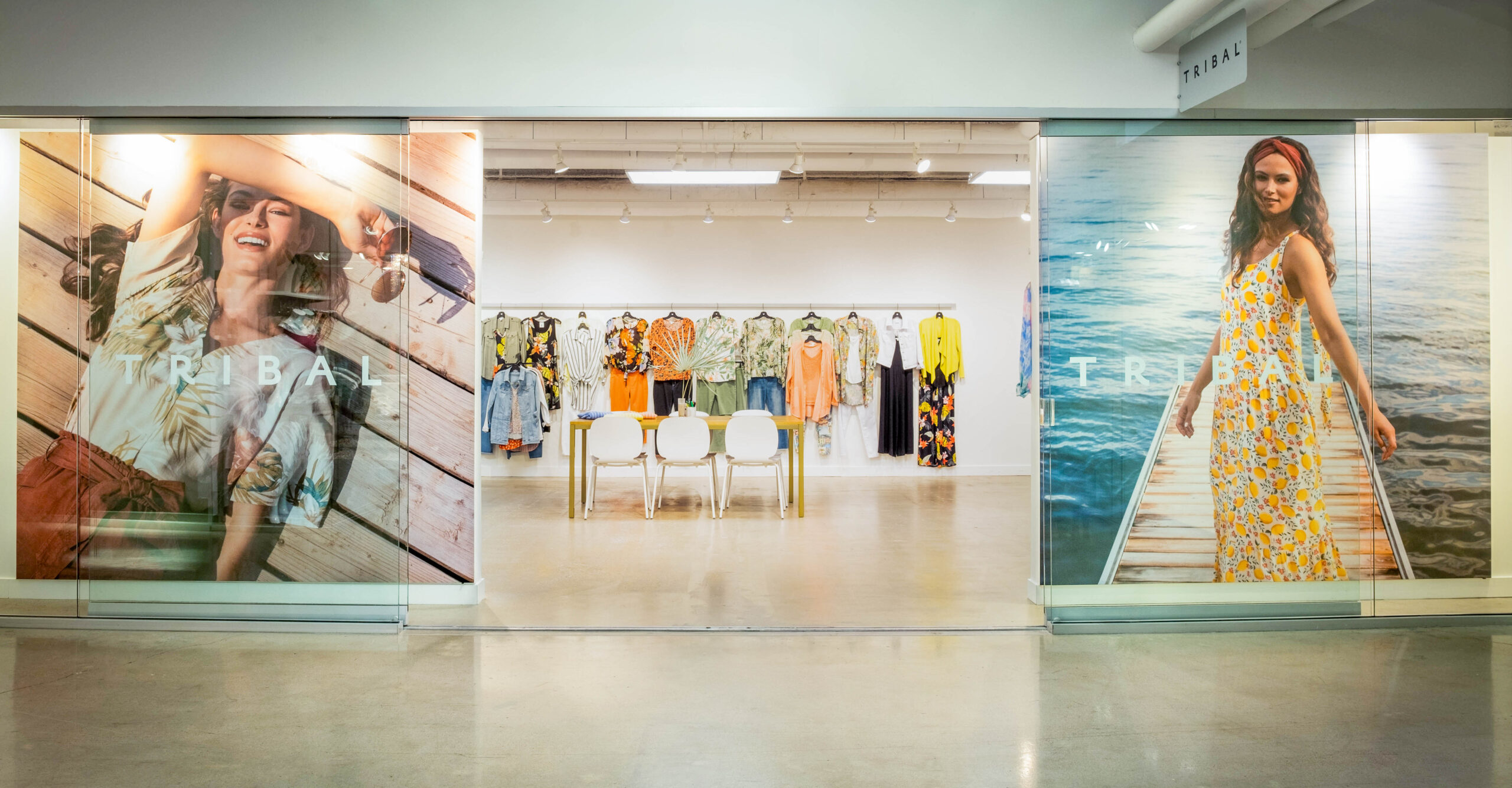What is SEG fabric?
SEG stands for silicone edge graphics, a popular type of fabric print with a thin silicone beading sewn around the edges of the print. The silicone beading tucks into a groove in the SEG frame, stretching the graphic tight, like a drum. The result is a sleek, modern display with an edgeless appearance that brands love.
Because SEG fabric is so easy to install, the graphics can be changed in just seconds (no tools or special skills required) to refresh the look of a space, making it a highly versatile signage solution. SEG can be found nearly everywhere, from retail stores, airports, trade shows booths, home décor and everywhere in between.
How is SEG fabric used?
SEG fabric can be displayed many different ways, from wall-mounted, freestanding and ceiling-suspended applications, making it perfect for many different environments. It comes in all types of shapes and sizes, everything from straight-edged frames to custom shapes like circles, arches and curved displays for the perfect fit for your brand.
Wall-mounted displays can be installed directly on the wall surface or recessed into the wall for look that’s flush with the wall. Freestanding displays are great for areas like retail store entrances and trade shows. Ceiling-suspended displays, or hanging displays, can be used in a variety of different ways, from wayfinding signage to store window displays. Freestanding and ceiling-supended displays can also be single- or double-sided, so you can have double the exposure. With so many ways to display SEG graphics, it’s easy to bring any space to life and find the perfect display for your project.
Wall-mounted SEG display (first image), freestanding SEG display (second image) and ceiling-suspended SEG display (third image).
What are the main differences between non-lit and backlit SEG?
Backlit displays are illuminated from the back side of the print by LED lighting, whereas non-lit displays do not have any lighting built into the hardware. SEG backlit fabric prints are installed into a lightbox which can illuminate the print from all sides of the frame, two sides of the frame or from a panel behind the fabric. SEG lightboxes usually have a thicker profile (usually around 3-5 inches) than non-lit SEG frames (typically around 0.5-2 inches), which provides enough space inside the display for light to evenly disperse and make the graphics come to life. Fabric SEG lightboxes (backlit) are typically powered by a standard wall outlet that can be inside or outside the lightbox, but there are battery-powered lightboxes available.
While non-lit displays do not have any lighting in the frame, they can be spotlighted by external lights to draw more eyeballs to the displays. Non-lit SEG is also a more economical solution compared to backlit and works great in well-lit areas. Backlit and non-lit fabric printing also varies based on the hardware, with backlit prints requiring a different printing profile than non-lit prints to prevent backlit prints from looking washed out.
Non-lit frame profile (first image) compared to backlit lightbox profile (second image).
Benefits of SEG Fabric
SEG offers several advantages. It is incredibly easy to install and change out the graphics, making it a versatile option for ongoing retail campaigns and trade shows displays. No tools or special training is required to install the graphics. SEG graphics and hardware are also economical to ship compared to rigid substrates because the SEG frame extrusions can be broken down and the fabric can be folded or rolled, saving brands in shipping expenses.
There are also multiple ways of fabric printing, including dye sublimation and UV. Dye sublimation is most common and involves transferring ink into the fabric with heat, so the ink becomes part of the fabric. UV uses ink that is printed on the surface of the material, which is typically better for detailed graphics, like small text and intricate designs. Dye sublimated fabric is also machine washable, so if the fabric ever gets dirty it can cleaned instead of having to buy a new print.
SEG fabric stands out as a versatile, cost-effective and visually appealing tension fabric solution for many signage needs. With options available for multiple applications, lighting options and spaces, SEG offers many ways to make any space stand out and get noticed. Its popularity across diverse environments, from trade shows to retail stores to airports, is a testament to its high quality and effectiveness. If you’re ready to take your signage to the next level, connect with one of our signage enthusiasts today to discover how SEG can take your image to new heights.
View Similar Blogs


































